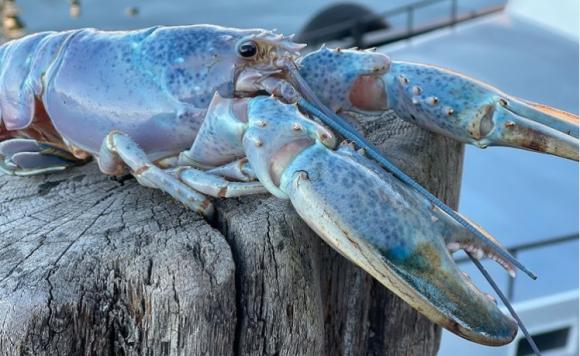 Recently, the media has been reporting the capture by lobsterman Billy Coppersmith of a rare “cotton candy” colored lobster. The speckled iridescent blue lobster, said to be a one in a 100 million catch, will not be sold or cooked. She will be on display later this week at the Seacoast Science Center in Rye, N.H. where she should live out her days in relative comfort in the aquarium.
Recently, the media has been reporting the capture by lobsterman Billy Coppersmith of a rare “cotton candy” colored lobster. The speckled iridescent blue lobster, said to be a one in a 100 million catch, will not be sold or cooked. She will be on display later this week at the Seacoast Science Center in Rye, N.H. where she should live out her days in relative comfort in the aquarium.
Most lobsters are a dark brown color, turning bright red when cooked. There are, however, rare lobsters in a range of colors from yellow, to blue, to red, white, even calico, and cotton candy.
The odds of encountering one of these oddly-colored lobsters are very slim. The Maine Lobstermen’s Community Alliance (MLCA) breaks it down:
Have you ever seen a blue lobster? About one out of every two million lobsters may come up in a trap colored blue. Your chances of finding a yellow lobster are even less; a yellow lobster is only seen once in 30 million lobsters. However, the rarest lobster is a white lobster. The chance of seeing a white lobster is only one in 100 million. There are even lobsters that are two different colors, one on each half of their bodies. These bi-colored lobsters are typically hermaphrodites bearing a male sex organ on one side of their body and a female sex organ on the other side. Lobstermen have also hauled up calico lobsters, orange lobsters, and even bright red lobsters!
Human beings come in different colors for much the same reason that lobsters do – the predominance of certain pigments. A pigment called melanin determines human skin color while lobster shells contain the pigment astaxanthin. Astaxanthin is naturally red, but when it binds with certain proteins it can appear blue or yellow. White lobsters are albinos and lack any pigments in their shells.

If only they’d cross lobsters with abalone, they’d be exquisite — especially with drawn butter.